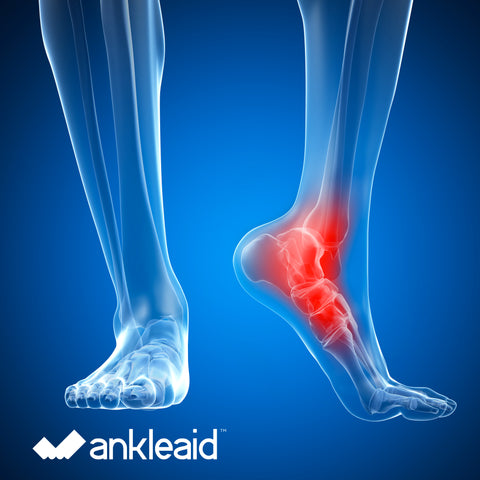
Tissue treated in cold-water immersion remains cooler significantly longer which translated means a better therapeutic treatment. However, patients tend to have an aversion to full foot immersion because of the cold discomfort to the toes (personal clinical experiences). The most common method of reducing the toes discomfort is to apply a ‘toe cover’, which reduces the amount of cold water reaching the toes, but many patients still prefer ice bags. The AnkleAid is a single foot cold-water immersion device, which features a preformed area for placing the injured foot, which ensures a 360 degree cold-water immersion and keeps the toes out of the water for patient comfort. The application of cryotherapy ranges from acute injury (e.g. ankle sprains), gout, malleolar fractures, rheumatoid arthritis, plantar fasciitis, achilles tendonitis post surgical and post rehabilitation therapy.
This post was contributed by Professor Lennart Johns at Quinnipiac University.

A recent report by Rupp, etal. (2012) compared the cryogentic effects of crushed ice bag versus cold water immersion. The results demonstrate that both methods work equally well in decreasing tissue temperature and there was no statistical difference in the amount of time required to cause a decrease of 8 degrees Celsius. The significance of this study lies in the time required for the tissue to return to normal temperature. Specifically, the tissue that was cooled via cold-water immersion remained cooler significantly longer, which translated clinically, suggests that cold-water immersion would decrease the amount of secondary cell injury as compared to ice pack applications. The longer rewarming time is likely due to cooling the tissue 360 degrees around the entire limb as compared to the ice bag application, which cools unidirectional (Rupp etal, 2012). This entire limb cooling becomes important especially in the acute ankle injuries; because many moderate to severe lateral ankle sprains result in soft tissue on the medial side of the ankle.
This post was contributed by Professor Lennart Johns at Quinnipiac University.

The use of cryotherapy is considered the standard of care for acute injury across the medical field. The primary physiological goals when using cryotherapy is to decrease tissue temperature, which in turn decreases cellular metabolism, the utilization of anaerobically produced ATP, lactic acid concentrations and secondary cell injury. Clinically, the decrease in secondary cell injury translates to a decrease in the extent of the injury and a quicker recovery, return to daily activities and work. The application of cryotherapy ranges from acute injury (eg. ankle sprains), gout, malleolar fractures, rheumatoid arthritis, plantar fasciitis, achilles tendonitis post surgical and post rehabilitation therapy.
This post was contributed by Professor Lennart Johns at Quinnipiac University.










